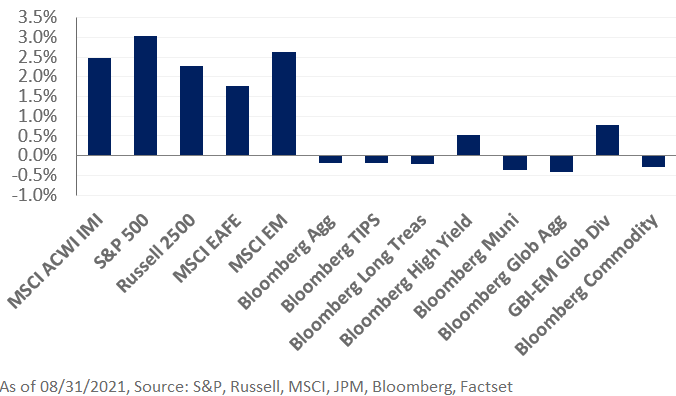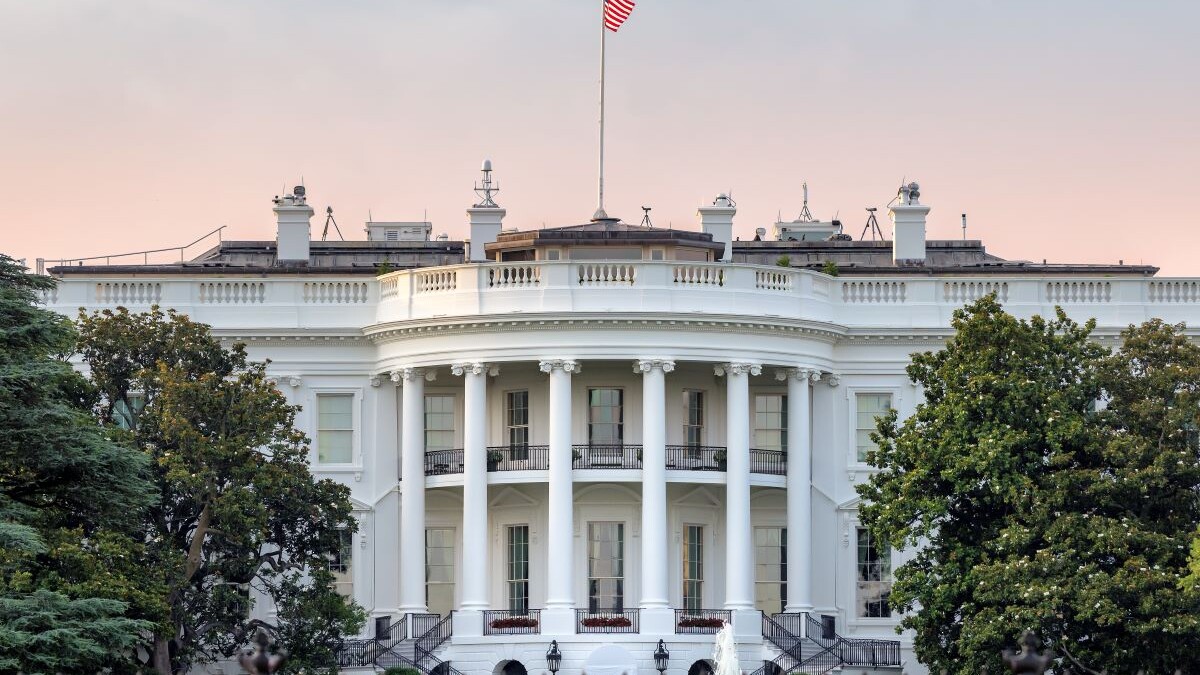Risk assets pushed higher in August with encouraging economic data, still-accommodative monetary policy, and strong corporate earnings underpinning positive sentiment. Despite another month of robust returns, concerns loomed over the continued spread of the Delta variant, negatively impacting consumer sentiment and expectations.
In the U.S., the S&P 500 Index posted a 3.0% return – marking the index’s seventh straight monthly gain. Internationally, the MSCI EAFE and MSCI Emerging Markets indexes increased 1.8% and 2.6%, respectively. Emerging market equities experienced a particularly volatile month as additional Chinese regulatory actions incited a sell-off, though the index rebounded by month-end.
Late in the month, the Federal Reserve held its annual meeting in Jackson Hole, WY, where Chairman Jerome Powell’s speech was interpreted as dovish: he pointed to the economy’s progress on inflation goals and the expectation that the labor market will reach its threshold shortly. As a result, balance sheet tapering is expected to begin by the end of year, though increases to the Fed Funds rate are not imminent. In response, U.S. rates rose modestly with the 10- and 30-year yields adding six and four basis points, respectively.
In real assets, spot WTI Crude Oil fell 7.3% for the month as global growth concerns overshadowed disruptions in U.S. production caused by Hurricane Ida.
Global equity markets and risk-assets have rallied considerably over the last year and continue to be supported by the robust macroeconomic backdrop. That said, we still suggest investors maintain a dedicated allocation to Treasuries to support liquidity levels and cash flow needs in the event of a market dislocation. Further, the current level of credit spreads in the public debt space implies muted forward-looking returns. As such, we encourage investors to reduce high-yield credit exposure and reallocate capital to an equal-weighted blend of safe-haven fixed income and S&P 500 exposure, which carries a more attractive risk-return profile.




